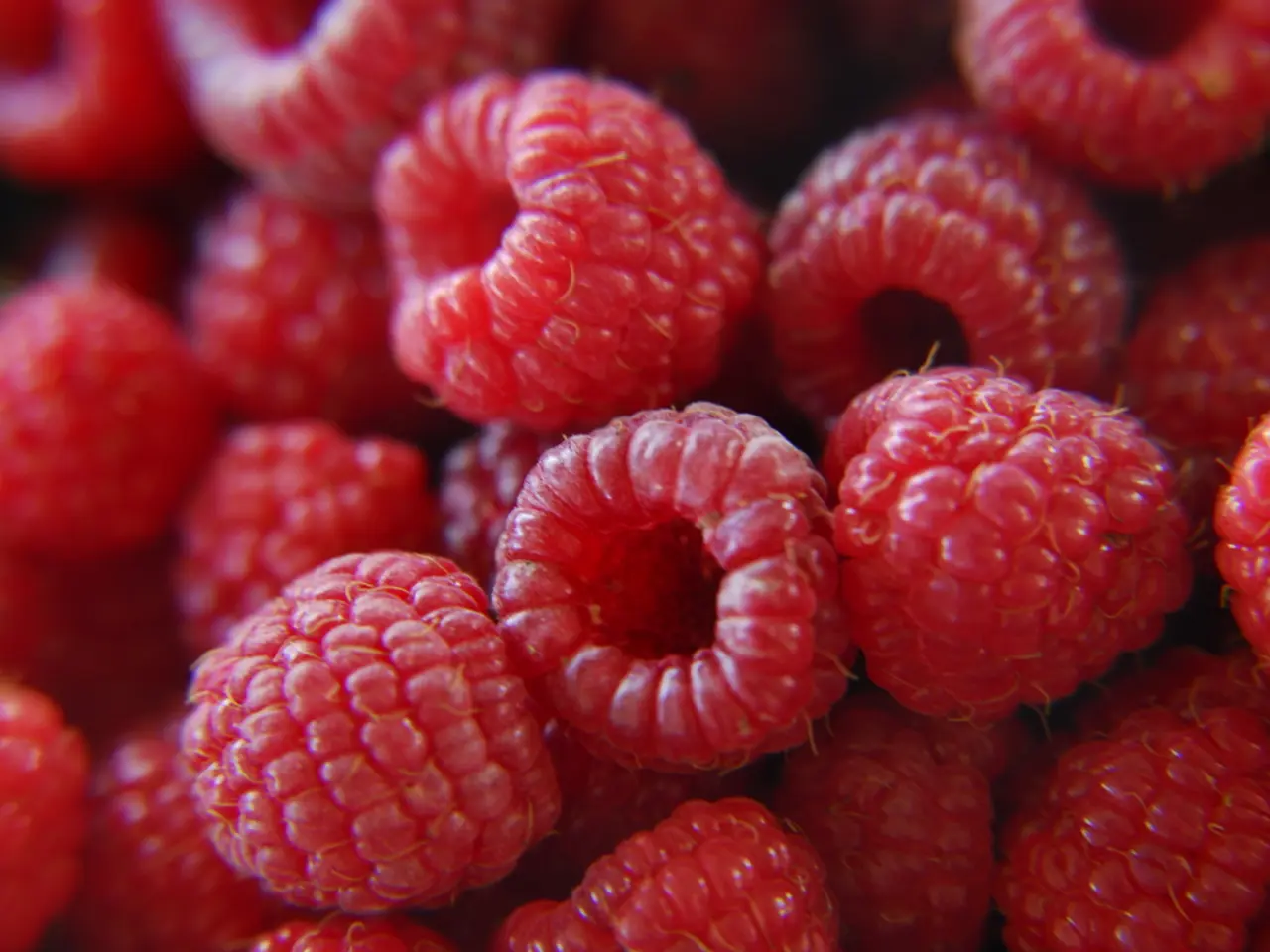Secrets to Achieving a Juicy Raspberry Harvest: Expert Gardener's Promises Revealed for Abundant Berry Production
================================================================
Raspberries, with their sweet and juicy fruits, are a popular choice for home gardeners. However, these plants require careful attention to thrive and produce a bountiful harvest. Here's a guide to help you grow raspberries successfully.
Firstly, understanding your USDA hardiness zone is crucial. This will help you select a raspberry variety that is adapted to your climate and can withstand the local weather conditions. For instance, 'Heritage' is hardy in zones 4-11 and fruits twice in a season, while 'Caroline' is suitable for zones 6-11 and is an everbearing variety with a long fruiting period.
Good drainage is essential for raspberry plants. They need a well-draining soil to prevent waterlogging, which can harm the roots and reduce fruit production. Adequate nutrients are also important. Raspberries require a boost of nutrients for fruit production, and a berry fertilizer or homemade compost can be used to provide the necessary nutrients. A slow-release granular fertilizer is a good option as it provides the plant with a gradual release of nutrients over a longer period through the growing season.
The planting time depends on the variety. Autumn-fruiting varieties might fruit in the first year, so they can be planted in the spring. Summer-fruiting varieties, on the other hand, usually fruit in their second year, so they should be planted in the fall.
Raspberries need at least six hours of direct sun daily to produce fruit. Choosing a sunny position for your raspberry plants is essential. Pruning higher raspberry stems blocking light to lower stems can also improve sun exposure. Pruning tree branches that cast shade on the raspberry plant can have the same effect.
Raspberry pruning affects fruiting, and the method depends on the variety. Primocane-bearing (everbearing) raspberries fruit on new canes grown that year. These are typically pruned by cutting canes to the ground in late winter or early spring, promoting fresh growth that will bear fruit in the coming season. Floricane-bearing (summer-bearing) raspberries fruit on second-year canes. After harvesting fruit in summer, prune out the spent floricanes to avoid overcrowding and disease, while leaving the new primocanes to mature.
Pruning mistakes can affect fruiting, so it's important to understand the pruning needs of your specific raspberry variety. Pruning is best done in early spring after assessing winter damage, removing dead or diseased canes to improve airflow and light penetration, thus boosting fruit production. Summer pruning can also help manage overgrowth and improve next season’s growth, especially in everbearing varieties.
If you're growing raspberries indoors, using full spectrum grow lights can aid in fruit production.
In conclusion, growing raspberries at home requires knowledge about the environment they need to thrive, proper planting, and careful pruning. By choosing the right variety for your hardiness zone, providing good drainage, adequate nutrients, and the right amount of sunlight, you can enjoy a bountiful harvest of sweet, juicy raspberries.
Maintaining a home-and-garden lifestyle, you might find joy in growing raspberries, a delightful addition to any home garden. However, to ensure a productive home-gardening venture with raspberries, it's essential to understand their lifestyle preferences, such as the need for proper planting, good drainage, suitable sunlight, and careful pruning.




